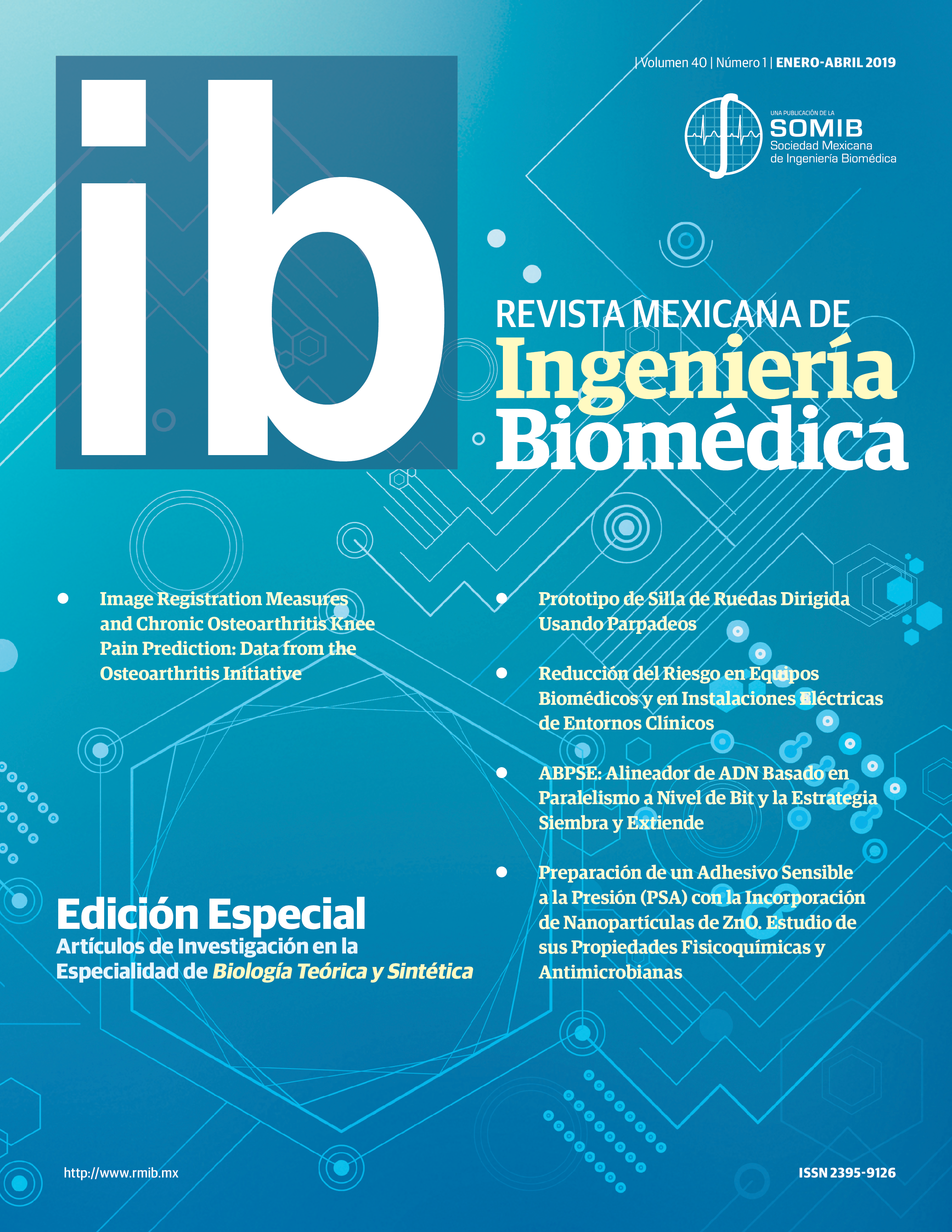Image Registration Measures and Chronic Osteoarthritis Knee Pain Prediction: Data from the Osteoarthritis Initiative
DOI:
https://doi.org/10.17488/RMIB.40.1.1Keywords:
osteoarthritis initiative, biomarker, KellgrenLawrence grade, knee registration, pain predictionAbstract
Osteoarthritis (OA) is the most common type of arthritis, is a growing disease in the industrialized world. OA is an incapacitate disease that affects more than 1 in 10 adults over 60 years old. X-ray medical imaging is a primary diagnose technique used on staging OA that the expert reads and quantify the stage of the disease. Some Computer-Aided Diagnosis (CADx) efforts to automate the OA detection have been made to aid the radiologist in the detection and control, nevertheless, the pain inherits to the disease progression is left behind. In this research, it’s proposed a CADx system that quantify the bilateral similarity of the patient’s knees to correlate the degree of asymmetry with the pain development. Firstly, the knee images were aligned using a B-spline image registration algorithm, then, a set of similarity measures were quantified, lastly, using this measures it’s proposed a multivariate model to predict the pain development up to 48 months. The methodology was validated on a cohort of 131 patients from the Osteoarthritis Initiative (OAI) database. Results suggest that mutual information can be associated with K&L OAI scores, and Multivariate models predicted knee chronic pain with: AUC 0.756, 0.704, 0.713 at baseline, one year, and two years’ follow-up.
Downloads
Downloads
Published
How to Cite
Issue
Section
License

This work is licensed under a Creative Commons Attribution-NonCommercial 4.0 International License.
Upon acceptance of an article in the RMIB, corresponding authors will be asked to fulfill and sign the copyright and the journal publishing agreement, which will allow the RMIB authorization to publish this document in any media without limitations and without any cost. Authors may reuse parts of the paper in other documents and reproduce part or all of it for their personal use as long as a bibliographic reference is made to the RMIB. However written permission of the Publisher is required for resale or distribution outside the corresponding author institution and for all other derivative works, including compilations and translations.








